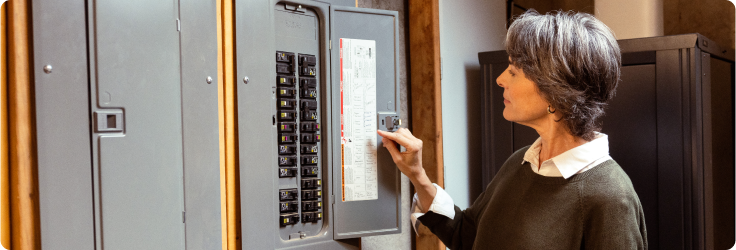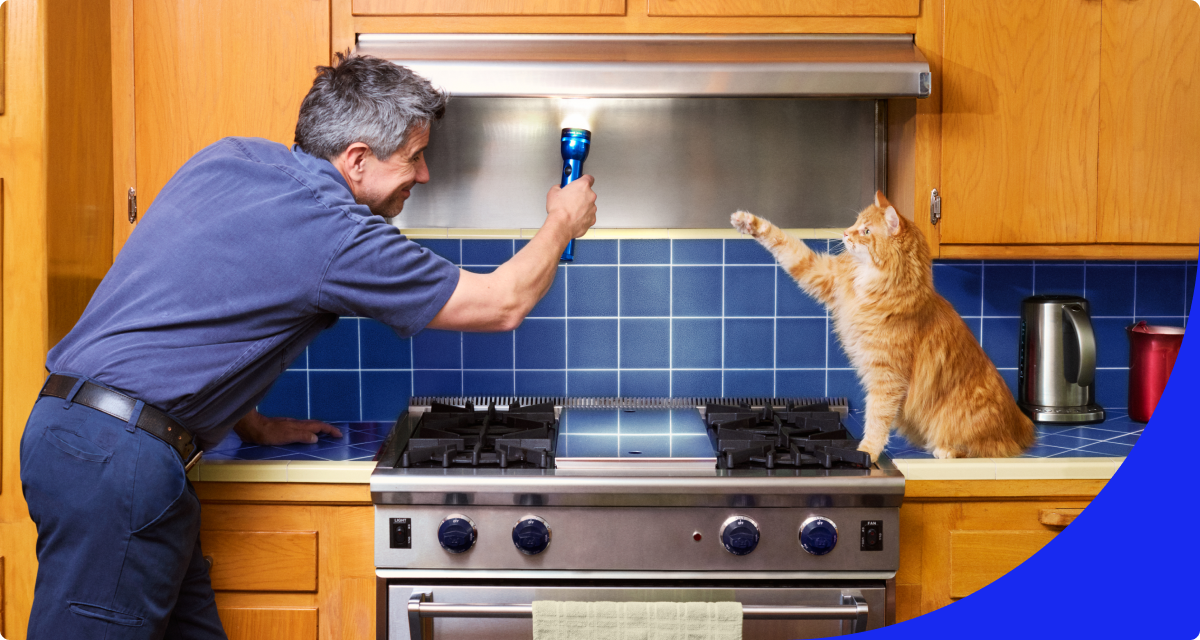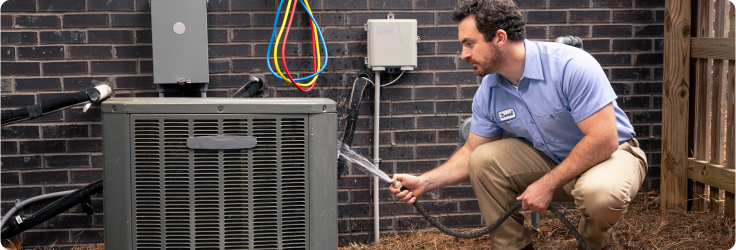You fire up your oven to bake a batch of your signature cookies. The preheat beep sounds, and you stick your baking sheet in. But when you open the oven again, it feels a little cooler than you would have expected, and your cookies are still gooey instead of golden and crisp. What gives?
If the temperature inside doesn’t match the display, there’s a good chance your oven is dealing with a breakdown caused by regular wear and tear. It’s not due to anything you did wrong— it’s just the natural result of your appliances working hard, day after day. And that’s exactly the type of problem a home warranty is designed to cover.
Not only does American Home Shield have you covered, we’re also committed to making sure you understand your coverage. An American Home Shield home warranty is built to protect parts of your home and give you peace of mind, not leave you sifting through fine print every time something covered breaks down. When normal wear and tear happens, you can trust your home warranty to step in and help keep your home running smoothly.
What is wear and tear?

When an American Home Shield home warranty plan says it covers “normal wear and tear,” this refers to the everyday, inevitable aging of your home’s systems and appliances. Pipes carry water, refrigerators hum along, and light switches get flipped. That’s life, and over time, that constant use causes certain parts to wear out.
And when they do? That’s where your home warranty steps in. Home warranties generally cover repairs or replacements for items that break down from this kind of everyday use— no disasters, no surprises, just the regular wear that comes with, well… living in your home.
What is and isn't considered normal wear and tear?
To make this a little clearer, let’s get specific. Remember, you should always refer to your plan terms to understand which systems or appliances are covered. Here are some real-life examples to help you sort out what’s typically covered and what’s not:
Plumbing
You flush, rinse, repeat— until one day, the toilet isn’t quite right. Turns out, the toilet flange (the part that seals the toilet to the drainpipe) has cracked from years of regular use. This slow, natural breakdown? Covered.
On the other hand, let’s say you’ve attempted a DIY replacement of your toilet. Carried away with gung-ho spirit, you over-tightened the bolts and the base has cracked. Unfortunately, because this was a breakdown that happened through misuse or accident (no matter how well-intentioned!) it wouldn’t be covered by your warranty— and is just another incentive to leave big fixes to a professional plumber.
Electrical
You’re enjoying a cozy evening when— bam!— half the lights go out. A breaker in your electrical panel has shorted from years of doing its job. That’s the kind of wear and tear your home warranty is built to handle.
Alternatively, if you learn that you’ve lost power due to a curious critter sneaking into your crawl space and chewing through some wiring, that’s accidental damage rather than normal wear and tear. Unfortunately, no warranty coverage for your uninvited guests.
HVAC
Imagine your HVAC system has been humming along for years when, suddenly, your home feels more sauna than sanctuary. A Pro finds that a blower motor (the part that pushes air through your vents) has worn out from years of regular use. That gradual, expected breakdown would be covered by your home warranty.
On the flip side, let’s say a powerful summer storm rolls through, and a lightning strike causes a power surge that fries your HVAC system’s electrical components. Because the damage is due to an external event rather than regular wear and tear, it wouldn’t be covered.
Appliances
Your fridge has been keeping your groceries chilled like a champ. But inside, there’s a tiny, undetectable refrigerant leak that finally catches up with you. It was cooling fine until it wasn’t— that’s normal wear and tear, and it’s covered.
Conversely, if a maintenance Pro shows up during the first month of your coverage to find your washing machine not even hooked up and with a giant rusted hole in the drum, it’s clear that the issue is beyond usual wear and tear. Since the damage stems from a known, pre-existing breakdown, it’s not covered under your home warranty.







